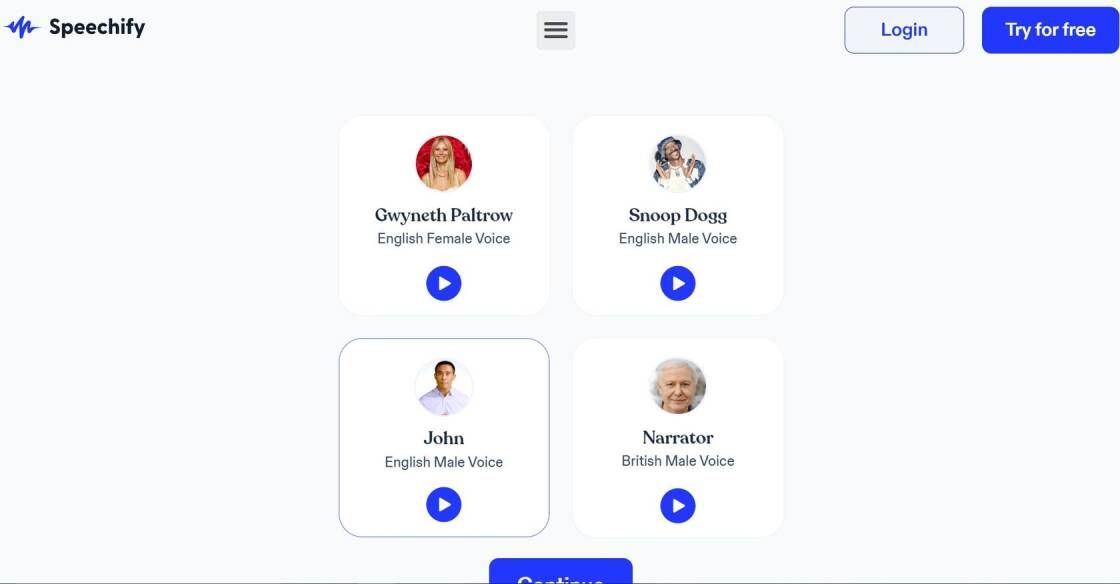

Set up a new frontend project with webpack, Parcel or snowpack super quick. Pick your main library, such as React or svelte, test tools, UI library and see the generated configs instantly in the browser. Download a zip with the project and start hacking!
Yadget is an honest-to-goodness SaaS tool designed to generate Synthetic Data for testing. You can produce realistic, non-identifiable datasets to help you test and validate your products. Ideal for sw developers for data testing and validation processes.
If you spent any time in a Waldenbooks in the 90s, then you can likely picture a Goosebumps book cover just by closing your eyes. Test your recall in this daily guessing game. Guesser beware, you're in for a scare!
TeamTT is a shared calendar 📅🧑🤝🧑 Main features : 🔹 Keep track of your co-workers schedules 🔸 Share your remote work planning 🔹 Share your events 🔸 Manage your team and calendars We are pleased to let you test this first released beta version 💖💙
AIS Ninja has revolutionized the chat platform landscape with its innovative features. This cutting-edge application taps into the potential of context-aware responses, diverse model integration, and creative expression through Painting with DALL.E2. By leveraging these advanced technologies, AIS Ninja offers a unique and immersive chat experience like no other. Users can now engage in conversations that are not only dynamic but also tailored to their specific needs and preferences. With AIS Ninja, communication becomes more intuitive, intelligent, and captivating, opening up a world of possibilities for enhanced interactions.
Crowd Feel is an innovative AI-powered tool that can detect and analyze the collective emotions and reactions of a crowd. This tool leverages the power of machine learning to identify patterns in speech, body language, and facial expressions, providing valuable insights into the thoughts and feelings of crowds. By using Crowd Feel, businesses, organizations, and event organizers can fine-tune their strategies and offerings to better suit the needs and preferences of their audience. With its ability to gauge the pulse of a crowd, Crowd Feel is revolutionizing the way we understand and engage with audiences.

Stable Diffusion Photoshop Plugin
Explore the best Photoshop apps - Adobe Photoshop

Jasper Chat
Jasper Chat | AI Chat for Content Creators

Zapier
OpenAI (Makers of ChatGPT) Integrations | Connect Your Apps with Zapier

FakeYou
FakeYou. Deep Fake Text to Speech.

GPT For Sheets
GPT for Sheets™ and Docs™ - Google Workspace Marketplace

Speechify
Best Free Text To Speech Voice Reader | Speechify

WatermarkRemover.io
Watermark Remover - Remove Watermarks Online from Images for Free

Palette.fm
AI Generated Music for Your Projects
The Turing test is one of the most recognized ways to evaluate a machine's intelligence and ability to mimic human behavior. As artificial intelligence continues to advance, the conversation around whether or not machines can truly think has resurfaced again with the introduction of GPT-3 (Generative Pre-trained Transformer 3). GPT-3 is an AI language model that uses deep learning to generate text. It has been praised for its natural language processing abilities, and many are curious to know how close it is to passing the Turing test. This article will explore the capabilities of GPT-3 and evaluate if it can truly pass the Turing test. We will look at the current research around GPT-3, as well as its implications for the future of artificial intelligence. Finally, this article will provide a conclusion on how close GPT-3 is to passing a Turing test.
The Turing Test is a test of a machine's ability to display intelligent behavior equivalent to, or indistinguishable from, that of a human.
GPT-3 has achieved impressive results in language understanding, but it is still far from being able to pass the Turing Test.
Yes, GPT-3 is capable of understanding and interpreting natural language.
No, GPT-3 is not yet able to pass a Turing Test.
GPT-3 uses a much larger dataset than other AI models, allowing it to better understand language and generate more accurate results.
Yes, GPT-3 is considered to be an AI model.
GPT-3 is more accurate than other AI models due to its larger dataset and deeper understanding of language.
The goal of giving GPT-3 a Turing Test is to evaluate its capabilities and determine how close it is to passing a Turing Test.
GPT-3 has many benefits, including improved language understanding, increased accuracy, and faster processing speeds.
Yes, GPT-3 is still far from passing a Turing Test, so it may not be suitable for certain applications where human-level intelligence is required.
| Competitor | Difference |
|---|---|
| OpenAI GPT-2 | GPT-3 is a larger, more powerful version of GPT-2. It has a larger model size and more training data. |
| Google BERT | BERT is a deep learning model used for natural language processing tasks such as question answering and language understanding. Unlike GPT-3, BERT is not designed to generate text. |
| Microsoft Turing | Turing is an AI system from Microsoft that is specifically designed to pass the Turing Test. It uses a range of AI techniques, including natural language processing and machine learning, to interpret conversations and determine if it is conversing with a human or a machine. Unlike GPT-3, Turing is not designed for general purpose natural language processing tasks. |
| IBM Watson | Watson is an AI platform from IBM that uses natural language processing, machine learning, and other AI techniques to analyze and interpret written and spoken language. Watson’s capabilities are focused on providing insights and recommendations, rather than generating text like GPT-3. |
The Turing Test is a well-known test created by Alan Turing in 1950 to determine whether a machine can demonstrate human-level intelligence. In recent years, the test has been applied to modern artificial intelligence (AI) technology, including GPT-3. GPT-3 is an advanced natural language processing (NLP) system developed by OpenAI that is capable of producing human-like text.
Although GPT-3 is highly advanced, it is still not capable of passing a Turing Test. GPT-3 has been shown to be able to generate human-like text from prompts, however, its responses lack the depth and complexity that would be required to pass a Turing Test. GPT-3 is not able to hold conversations or respond to questions in a meaningful way, meaning that it does not have the capacity to understand the context of a conversation or the implications of its own responses.
Despite the fact that GPT-3 is not yet capable of passing a Turing Test, it is still a remarkable achievement in AI technology. GPT-3 has demonstrated a remarkable ability to generate human-like text from prompts and is capable of carrying out complex tasks such as summarizing texts and creating original content. GPT-3 also has a great potential to become even more advanced in the future, as developers are able to refine and improve its algorithms.
In conclusion, GPT-3 is an incredible achievement in AI technology, but it is not yet capable of passing a Turing Test. However, with further improvements and refinements to its algorithms, GPT-3 could potentially become sophisticated enough to pass a Turing Test in the future.
TOP